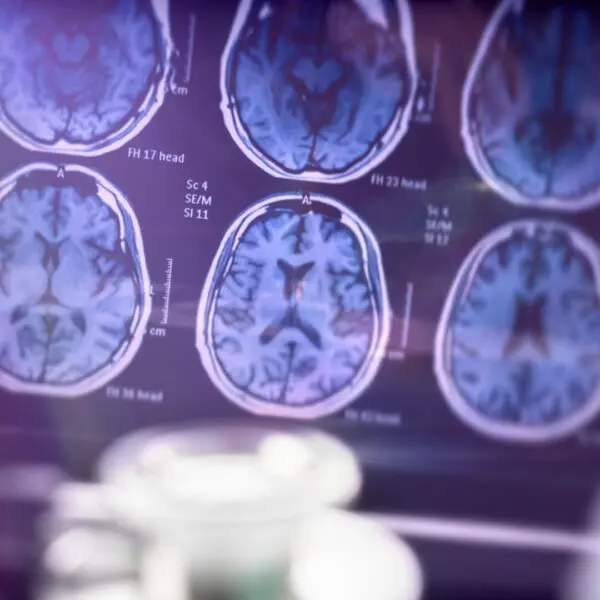Glucagon-like peptide 1 receptor agonists (GLP-1s) have revolutionized type 2 diabetes and obesity treatments over the past two decades. These medications mimic a natural hormone in the body, offering benefits beyond traditional therapies.
How GLP-1s Work
GLP-1s activate the GLP-1 receptor, which is crucial for glucose metabolism and appetite regulation. This activation leads to benefits such as enhanced insulin secretion, reduced glucagon secretion, slowed gastric emptying, and increased satiety signals in the brain. These mechanisms improve glycemic control and promote significant weight loss. New agents like Semaglutide can achieve weight reductions of up to 20% in some patients.
Cardiovascular & Renal Benefits
Large-scale clinical trials have shown that certain GLP-1s protect against major adverse cardiovascular events (MACE), including heart attacks and strokes. This cardioprotective effect is crucial for patients with type 2 diabetes, who have increased cardiovascular risk. GLP-1s may also slow the progression of diabetic kidney disease, offering nephroprotection for high-risk patients.
Expanding Therapeutic Potential
Researchers are exploring GLP-1s for treating various conditions, including:
- Non-alcoholic fatty liver disease (NAFLD)
- Non-alcoholic steatohepatitis (NASH)
- Peripheral artery disease
- Neurodegenerative disorders like Parkinson’s and Alzheimer’s disease
While early results are promising, more extensive clinical trials are needed to establish efficacy and safety.
Safety Profile
GLP-1s have been extensively studied, particularly in type 2 diabetes. Common side effects include gastrointestinal symptoms, injection site reactions, and headaches. These side effects are often transient and can be mitigated with dose titration. Long-term safety data have no confirmed initial concerns about increased pancreatitis or medullary thyroid cancer risks.
Ongoing safety research focuses on potential effects on bone marrow density, impact on muscle mass (especially with significant weight loss), and risk of gallbladder diseases (including cholelithiasis).
Use in Pediatric Populations
Recent studies have explored GLP-1s in pediatric populations with type 2 diabetes or obesity. Some agents have received regulatory approval for these age groups. There’s growing interest in the potential benefits for polycystic ovary syndrome (PCOS) and fertility treatment. However, these medications are contraindicated during pregnancy, and careful management is required for women of childbearing age.
Future Developments & Challenges
The field of GLP-1-based therapies is rapidly evolving. Exciting developments include:
- Oral formulations to improve adherence
- Dual and triple receptor agonists
- Long-acting formulations for less frequent dosing
- Combination therapies with other medication classes
Despite their success, several challenges remain in optimizing the use of GLP-1s. These challenges include mitigation of sarcopenia risk, balancing benefits against rare but serious side effects, optimizing use in specific patient populations, understanding long-term impacts on various organ systems, and exploring applications in metabolic and neurological disorders.
Current & Future GLP-1 Delivery Methods
This article I came across discusses the future of GLP-1 medicines and how it is heading towards a sophisticated multi-agonist approach. Researchers are exploring combinations that target the GLP-1 receptor alongside other key receptors and pathways. These include the activin receptor type 2A (ACVR2), apelin receptor (APLNR), amylin receptor (AMLNR), glucagon receptor (GCGR), glucose-dependent insulinotropic polypeptide receptor (GIPR), glucagon-like peptide 2 receptor (GLP2R), and neuropeptide Y2 receptor (NPY2R). Each of these targets plays a role in various medical conditions, and their combined activation could potentially address multiple health issues simultaneously.
This innovative approach aims to expand the therapeutic benefits of GLP-1 medicines beyond their current applications. By targeting these additional receptors, researchers hope to develop treatments that could reduce the risk of kidney disease, metabolic liver disease, and osteoporosis, while also addressing issues like adipose tissue accumulation, sarcopenia, and hyperglycemia. The GLP-1 seems to knock down inflammation, which can lead to many medical benefits. We must remember that inflammation leads to an entity called “inflammaging.”
The article also discusses how the landscape of GLP-1 delivery is rapidly evolving, with both established and investigational methods in development. Current and late-stage approaches include:
- Peptide agonists
- Peptide multi-agonists
- Oral peptides
- Oral small molecules
It also mentions how researchers are exploring innovative, earlier-stage delivery methods:
- Antibodies
- Cell-based therapies
- Gene therapy
- Gene editing
These diverse approaches aim to enhance efficacy, improve patient adherence, and expand treatment options. I suspect that future GLP-1 therapies will utilize a combination of these methods.
GLP-1s at PUR-FORM
At PUR-FORM, we now offer a comprehensive weight loss program that includes GLP-1 receptor agonists. For patients struggling with obesity or excess weight, we frequently prescribe Semaglutide (Ozempic, Wegovy) and Tirzepatide (Mounjaro). Our cutting-edge program also offers therapeutic peptides to enhance fat loss, improve insulin sensitivity, and increase energy expenditure when appropriate. You can also combine GLP-1s with our other advanced modalities such as cryotherapy, infrared sauna, IV therapy (specifically EGCG IV), and DermaShape to aid in weight loss.
GLP-1 receptor agonists represent a significant advancement in treating metabolic disorders. Their benefits extend beyond glycemic control and weight loss. As research continues, these medications will play an increasingly important role in personalized medicine for cardiometabolic disorders.
-Dr. P
You may also enjoy reading:
Wegovy and Weight Loss, the Truth About this Famous New Weight Loss Drug
Green Tea Extract IV Therapy: Unlock the Power of Antioxidants














